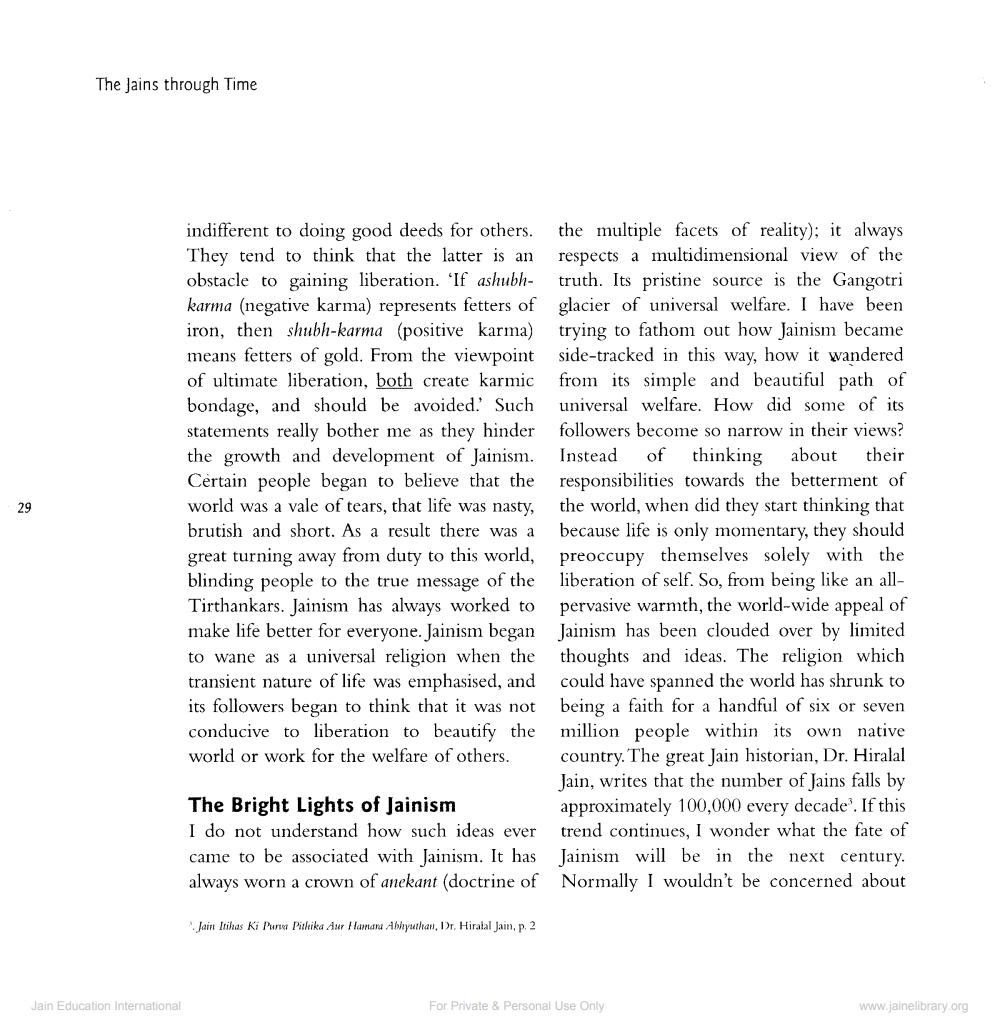________________
29
The Jains through Time
Jain Education International
indifferent to doing good deeds for others. They tend to think that the latter is an obstacle to gaining liberation. 'If ashubhkarma (negative karma) represents fetters of iron, then shubh-karma (positive karma) means fetters of gold. From the viewpoint of ultimate liberation, both create karmic bondage, and should be avoided.' Such statements really bother me as they hinder the growth and development of Jainism. Certain people began to believe that the world was a vale of tears, that life was nasty, brutish and short. As a result there was a great turning away from duty to this world, blinding people to the true message of the Tirthankars. Jainism has always worked to make life better for everyone. Jainism began to wane as a universal religion when the transient nature of life was emphasised, and its followers began to think that it was not conducive to liberation to beautify the world or work for the welfare of others.
The Bright Lights of Jainism
I do not understand how such ideas ever came to be associated with Jainism. It has always worn a crown of anekant (doctrine of
Jain Itihas Ki Purva Pithika Aur Hamara Abhyuthan, Dr. Hiralal Jain, p. 2
the multiple facets of reality); it always respects a multidimensional view of the truth. Its pristine source is the Gangotri glacier of universal welfare. I have been trying to fathom out how Jainism became side-tracked in this way, how it wandered from its simple and beautiful path of universal welfare. How did some of its followers become so narrow in their views? Instead of thinking about. their responsibilities towards the betterment of the world, when did they start thinking that because life is only momentary, they should preoccupy themselves solely with the liberation of self. So, from being like an allpervasive warmth, the world-wide appeal of Jainism has been clouded over by limited thoughts and ideas. The religion which could have spanned the world has shrunk to being a faith for a handful of six or seven million people within its own native country. The great Jain historian, Dr. Hiralal Jain, writes that the number of Jains falls by approximately 100,000 every decade'. If this trend continues, I wonder what the fate of Jainism will be in the next century. Normally I wouldn't be concerned about
For Private & Personal Use Only
www.jainelibrary.org




